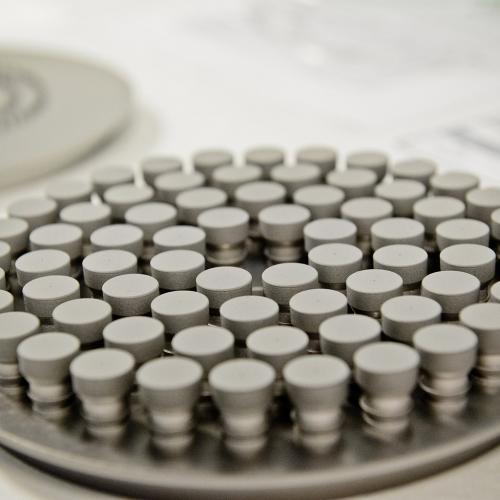General principle
This process creates a strong bond between the metallised ceramic and a metal using a metal filler (brazing alloy) brought to its melting temperature which wets the metallic part and the metallised layer of the ceramic.
Detailed description
Brazing involves three stages:
- A metal layer is first applied to the ceramic (Metallisation of ceramics).
- Jointing of ceramic and metallic components in a support tool (graphite or alumina) with the brazing joint between the surfaces to bond.
- Transfer to the kiln to bring the filler metal to its melting point in order to wet the metallic surfaces, then cooling to solidify the whole part.
Examples of moly-manganese + metal metallised alumina brazing:
Materials involved
For ceramics, the main materials used are very high purity alumina, alumina/zirconia composites, zirconia, ruby, sapphire and aluminium nitride.
The metal components to be brazed are created from metals and alloys such as titanium, OFHC copper, molybdenum, tungsten, platinum, nickel, iron-nickel alloys, and stainless steel.
To bond the metallised ceramic to the metal component, filler metals are used (e.g. Ag-Cu, Cu, Au, Ni-Au).
Advantages and disadvantages of this process
Avantages
- Hermeticity
- Reliable jointing technique
- Resistance to high temperatures (brazing on moly-manganese metallisation)
- Biocompatible (brazing on thin layer metallisation)
Inconvénients
- Costly technique compared to bonding or mechanical jointing.
For more information
Raw material
Finished product

